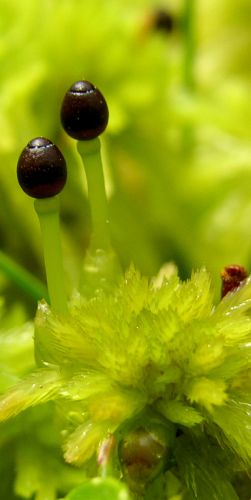| HOME | GENERAL | MOSSES | USES | HISTORY | LITERATURE | LINKS | CONTACT |
MOSSES OF CHILE |
Download the work "Géneros de briófitos de Isla Jéchica, Archipiélago de Los Chonos, Aisén". By Juan Larraín, 2012. |
Recently added genera: |
In Chile there are almost 900 moss species. A high percentage of them grows only in southern South America. These endemic mosses don’t grow in any other place of the world, that’s why it is important to conserve the habitats where they live. In this way, we will be able to know them, and admire their simple beauty. In addition to the ca. 890 moss species that grow in Chile, there are more than 550 liverwort and hornwort species, making a total of nearly 1440 bryophyte species for the country. This number represents almost the 20% of the total number of plant species of the country (5971 vascular plant species + 1440 bryophytes = 7411). In Brazil, for instance, which is the country with highest biodiversity in the world, the ca. 3100 bryophyte species that grow there correspond only to a bit more than the 5% of the total number of plants in the country (58000). All the destruction already done to Chile’s natural vegetation, specially in the central regions, and the destruction that every day is still happening, represents a major thread to the diversity of Chile’s natural heritage. |
 |
|
 |
The knowledge of our moss flora is still poor, and the estimations about the real number of species that grow in the country are just an approximation. There is scattered information about the moss collections made in the past, and there is still lacking a complete regional flora of Chile with keys to families and genera, so the only resource for determining Chilean material are the scattered monographic works dealing with Chilean mosses and exotic floras. Until today, there are several very abundant and diverse genera that have not yet been revised locally, making the identification of species in these groups very difficult: Sphagnum, Schistidium, Campylopus, Dicranoloma, Ditrichum, Syntrichia, Barbula, Didymodon, Bryum, Pohlia, Macromitrium, Ulota, etc. Nowadays, the number of Chilean specialists dedicated exclusively to the study of this group is minimal. The Botany Department at Univeristy of Concepción keeps the largest bryophyte herbarium in the country (almost 20000 specimens) and the most complete bryological library in the country. In the recent years there has been a great improvement in the knowledge of moss taxonomy in the entire world, and there are many recent revisions of families and genera that involve Chilean representatives. These works are an essential if someone wants to start learning about this group of plants. This website tries to become a reference for those who wish to get introduced in the Chilean bryophyte flora, presenting basic collecting and determination techniques, diagnostic genera descriptions, photographs of the most conspicuous species, with brief comments and biogeographic information, as well as a history of the bryological exploration in Chile, a complete literature dealing with Chilean mosses, and the importance of bryophytes to humans.
|
Juan Larraín 2006-2016 |
The material on this website can be freely used under the terms of a Creative Commons Attribution-NonCommercial-ShareAlike 3.0 license. Any commercial use should be asked to the author. |
Cite this page as: Larraín, J. 2016. Musgos de Chile. URL: http://www.musgosdechile.cl (include the date when the information was obtained) |
|
Visits |
| HOME | GENERAL | MOSSES | USES | HISTORY | LITERATURE | LINKS | CONTACT |